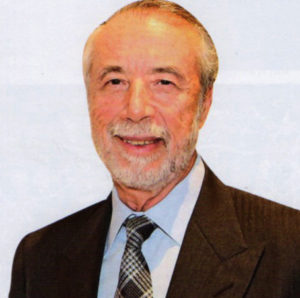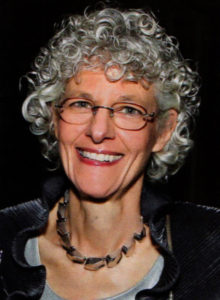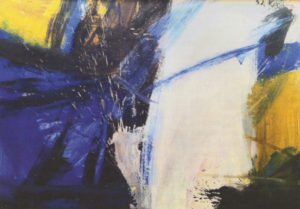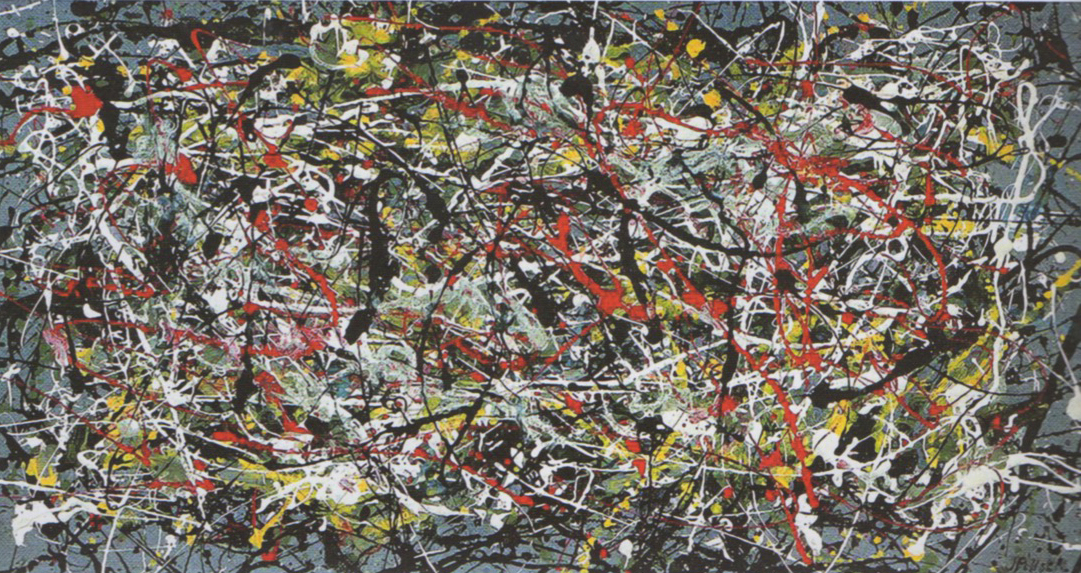With a sixth case settled against the once-venerable gallery—shuttered after it was accused of selling fakes—art world insiders reflect on new standards for dealing in blue-chip works.

Domenico De Sole
When the news came on February 9 that an out-of-court settlement had been reached in the civil lawsuit brought by Domenico and Eleanore DeSole against Knoedler Gallery, Ann Freedman, and 8-31 Holdings, the parties involved may have felt relief, but the greater art world was left disappointed and nervous. The agreement preempted the highly anticipated testimony of compromised gallerist Freedman,as well a sa jury verdict on whether the accused parties were guilty of fraud, breach of warranty, and the other charges stemming from the 2004 sale of an $8.3 million painting by Mark Rothko, Untitled, 1956, seen on the page at right, which turned out to be a worthless fake. Asa result, many art world insiders came away wondering if any lessons had been learned.
The De Sole case was the sixth often brought against Knoedler to be settled prior to judgment. As with most of the settlements, the terms of the De Sole agreement are sealed, leaving observers to guess how close the collecting couple came to recouping their loss (or exceeding it). If the trial had gone the distance, and if the nine-member jury had ruled in the couple’s favor, it could potentially have awarded the De Soles triple damages, about $2.5 million.
The “Rothko” painting was one of 63 “Abstract Expressionist” works produced by forger Pei-Shen Qian of Woodhaven, Queens, and among 3 examples—purportedly by such giants as Rothko, Robert Motherwell, Barnett Newman,and Jackson Pollock—sourced from Long Island art dealer Glafira Rosales and her boyfriend Jose Carlos Bergantinos Diaz, and tendered for some $80 million by the Knoedler Gallery between 1994 and 2008. Freedman, who was president and director of Knoedler at the time of the “Rothko” sale, was forced to resign in October 2.009 by gallery owner Michael Hammer, who had received a subpoena for records relating to works acquired through Rosales. (Rosales pled guilty to wire fraud,money laundering,and tax evasion in September 2013, but has yet to be sentenced. The curious situation may imply that prosecutors still hope she’ll spill more beans in exchange for a lighter prison sentence. The low-paid forger has since fled to China.)

Ann Freedman
Beyond causing the sudden and unanticipated demise in 2011 of America’s oldest art gallery,the scandal spread embarrassment and shame across the artworld. Dealers curators, advisers, historians, conservators, and assorted commission-chasing middlemen became entangled, unwittingly or otherwise, in a world-class scam that left a distinctly sour taste ahout the inner workings of so-called blue-chip art corn commerce.
In the wake of this most recent settlement, I talked to a number of those figures and attorneys in the De Sole case to gauge their reactions to the still unspooling tale and its potential consequences.
“Galleries have to tell the truth,” said Gregory Clarick of New York’s Clarick Gueron Reisbaum, and the lead attorney for the De Soles. “If they say a work has a particular provenance, they should be able to prove that provenance with a documented history of the work. The case shows that if a gallery doesn’t have a documented provenance, it’s taking on some amount of risk. If a gallery presents a provenance, it does so at its own peril if it doesn’t have that on paper. The risk is on the gallery.” With regard to due diligence in ascertaining whether an offered work is legitimate, Clarick said, “Buyers are acting reasonably when they rely on the representations of reputable galleries. In the case of the De Soles, they were reasonable and right to rely on the word of Knoedler.”
| The Litigators | |
| The parties involved in the De Sole al. v. Knoedler Gallery,LLC et al. case spared no expense when it came to engaging legal council. Ann Freedman brought on Luke Nikas, a partner in the powerhouse New York firm Boies, Schiller & Flexner, who has represented the Andy Warhol Foundation, as her lead attorney. Gregory Clarick of New York’s Clarick Guertin Reisbaum, the lead attorney for the De Soles, has successfully represented artists such as Raymond Pettibon and Takashi Murakami. | |
| The Defendants | |
| An Italian businessman and former president and CEO of Gucci Group, Domenico De Sole is chairman of the New York–based luxury retailer Tom Ford International andhas been chairman of the board of Sotheby’s since March 2015. He was elected to the board of directors of the house in July 2013. In 2004, De Soleand his wife, Eleanore, purchased Untitled, 1986, a red-and-black-toned painting attributed to Mark Rothko, for S8.3 million from the Knoedler Gallery. The canvas turned out to be a worthless fake. | |
| The Plantiffs | |
| Ten cases have been brought against Ann Freedman, Knodler Gallery, and its private holding company 8-31 Holdings, which is owned by Michael Hammer. The defendants have been accused of knowingly selling 31 fake Abstract Expressionist works for some $8o million between 1994 and 2008. Purportedly by such big names as Mark Rothko, Robert Motherwell, Barnett Newman, and Jackson Pollock, the forgeries—painted by a talented Chinese artist working out of a garage in Woodhaven, Queens—were sourced from Long island art dealer Glafira Rosales and her boyfriend, Jose Carlos Bergantinos Diaz. |
“The evidence went inexactly as we expected,” said Luke Nikas, a partner in the powerhouse New York firm Boles, Schiller & Flexner, and Ann Freedman’s lead lawyer. “We felt good about what we needed rode with Ann’s testimony, with a former FBI agent who was going to testify on Ann’s behalf,and the various other experts, including an art dealer, who were going to support Ann’s case.” But as Nikas further observed, “that’s the side of the story that people haven’t heard, and if they did, they would understand better the significant steps Ann took to vet these paintings.”
Pressed to explain why the parties settled on the eve of Freedman’s scheduled testimony, Nikas said, “We had been negotiating a settlement with the De Soles for several years, sporadically at times, but more intensely over the two months before the trial. We were able to resolve the case with them because several other pieces of the global disputes that Ann Freedman has with other plaintiffs started to come together, and we believe that we’re close to resolving all or mostly all of the cases. Getting to that point was necessary to resolve the case with the De Soles.”

Among the Knoedler- tendered forgeries are Untitled, 1956-57, above, purportedly by Willem de Kooning, which was sold to collector John Howard for $4 million in 2007
Still, many who observed the trial or more distantly followed the reams of publicity about the case seemed convinced of the dealer’s guilt, even without a jury verdict. According to Nikas, “for someone to form a conclusion that Ann Freedman didn’t act in good faith, without having all the information, has reached a premature judgment.”
The litigator also pointed out that in November 2003, a year before the De Soles purchased their “Rothko” from Knoedler, Freedman received a letter from Laili Nasr, project coordinator of the Rothko online resource and a contributor to the artist’s catalogue raisonne for works on paper at the National Gallery of Art in Washington, D.C. In the letter, Nasr stated that if the NGA was to publish a supplement to David Anfam’s 1998 Rothko catalogue raisonne, “we intend to include the above mentioned painting, Untitled, 1956, among the works featured, reproducing the painting along with a comprehensive catalogue entry.”
When I asked about that letter, Anabeth Guthrie, chief of communications at the NGA,said, “Laili’s letter was taken out of context. The back-and-forth was between two people who know and understand that the NGA does not authenticate artworks. That was implied.”

A forgery of Untitled 1950 by Jackson Pollock bought by Belgian hedge funder Pierre Lagrange for $15.3 million plus commission in 2007. Lagrange settled his suit with the gallery in October 2012.
In any case, Nikas noted, “an art dealer cannot get better confirmation of authenticity.” So what was his big take away? “Ann Freedman was still wrongfully accused of selling a cache of forged paintings knowing they were inauthentic. This illustrates the importance of art dealers getting every single confirmation in writing.”
Anfam, an oft-cited expert on Abstract Expressionism, told me, “Scholars are in a more vulnerable position than ever before. Scholarship should be the first port of call for whatever we want to know about works of art, but in the same breath,those who practice it are vulnerable to being manipulated, misconstrued, and worse.” During the De Sole trial, he was queried about a letter Freedman had prepared for the couple prior to their purchase of Untitled, in which she cited art historians and scholars who had supposedly favorably viewed the work—among them Christopher Rothko, the artist’s son; the art critic and historian Irving Sandler; and Anfam. In his testimony, Anfam said, “If I had known my name was being used in inappropriate ways, then I would never have given permission for such use. I want to stress that I had not even seen works about which it was intimated I had viewed with approval or similar.” During a recent conversation he told me, “I shall probably be less obliging in providing information and help to all corners, but otherwise I am more or less sticking to my guns, as they say.”
The art historian, who is currently at work organizing a survey of Abstract Expressionism for the Royal Academy in London, spoke of the trickery that accompanied the Knoedler/Rosales transactions, in which the obscure Long Island dealer provided Knoedler and Freedman dozens of unknown and undocumented paintings, selling them to the gallery for bargain-basement prices, which should have been a red flag. “If I had been aware of the full roster of works involved,” said Anfam, “rather than a handful of them scattered over a period of more than a decade, it would have immediately changed my view of the whole.”
Anfam admits that he, too, was taken in. He unwittingly included Untitled, 1949, a purported Barnett Newman from the Rosales inventory, in his September 2008 exhibition “Abstract Expressionism—A World Elsewhere” at the Christie’s-owned Haunch of Venison Gallery at Rockefeller Center. The work bore the now alarm-bell provenance “Private Collection, Courtesy Knoedler & Company, New York” in the hardbound exhibition catalogue.
“We were clearly affected by this,” said Adam Sheffer, current president of the Art Dealers Association of America, “and tightened our guidelines and changed our procedures to prevent this from happening again.”
Sheffer, a partner in the Chelsea gallery Cheim & Read, recalled his reaction to Patricia Cohen’s bombshell article on the front page of the New York Times that on December 2, 2011 revealed an ongoing FBI investigation into a possible modern-art forgery ring, naming Knoedler Gallery as part of its investigation. The piece appeared on the very day of the VIP opening of Art Basel Miami Beach.
“The ADAA reacted immediately,” said Sheffer. “The first thing we did, we sat down and said, ‘How are we going to strengthen our guidelines so that we can address a situation with a work on display that comes under question?'” Though Sheffer didn’t specifically address the incident, it came out in court filings that a number of Rosales-supplied works had made their exhibition debut at the Knoedler stand during some of the ADAA’S annual art shows at New York’s Seventh Regiment Armory. These included a painting attributed to Willem de Kooning that Knoedler sold to collector John Howard for $4 million in 2007,having acquired it seven months earlier from Rosa les for $750,000. Howard’s case against the gallery was originally mated with the De Sole action, but Howard settled before the trial began, according to his lead attorney, John Cahill of Cahill Partners in New York.
“The works that were on view at the Knoedler booth had never come to our attention as being inauthentic,” said Sheffer, “but we decided, ‘How do we change this going forward?’ What we did was put into place a very firm agreement by which every exhibitor admitted to the fair signs a contract that states that the ADA A has the right to order any work they have on view that does not meet the approval of the ArtShow committee, or comes under question by anyone in a position of expertise, to be withdrawn from the fair. If they refuse to do that, then they are removed from consideration to participate in the fair the following year. We have never had that situation since that time.”
There was no need for theADAA to take action against Knoedler for breaching the new guidelines, as the gallery abruptly closed shop a few days before the Times story came out. On November 30 2011, the public relations firm Rubenstein Associates, which specializes in crisis management, issued a terse announcernent: “It is with profound regret that the owners of Knoedler Gallery announce its closing, effective today.” The press release made no mention of the lawsuit filed the day before by hedge fund manager Pierre Lagrange over a $15.3 million purported Jackson Pollock, Untitled, 1950, that the collector bought from Knoedler through his art adviser Jaime Frankfurt and London’s Timothy Taylor Gallery in November 2007; it, too, turned out to be a Rosales-provided fake.
The function of art advisers, who often acted as omnipotent middlemen between the gallery and the buyers during the Knoedler forgery-trading years, played a starring role in the trial, due partly to the testimony of Santa Fe adviser and dealer James Kelly. It was Kelly who represented the De Soles in the “Rinhko” sale, for which he took a $100,000 commission, As directed by his client, his role was strictly limited—as he testified in court with the DeSoles looking on—to finding out if the asking price was realistic. Nothingmore.
“As far as the Association of Professional Art Advisors goes,” said New York art adviser and ADAA board member Todd Levin, “there’s a fiduciary responsibility for all advisers to meet a certain minimal level in terms of looking after our clients’ best interests, both from a legal perspective and an ethical perspective as well as a financial perspective. Clearly, the job that was done by whoever this person is,” he added, referring to Kelly, “was not remotely up to what the minimal standards would be by A PAA guidelines.”
“If you ask me what needs to change,” Levin said, “potential purchasers or collectors need to do a much better job picking their advisers.”
“The lack of a verdict in this case is deeply unsatisfying, and I think it just means the bar has to be raised for everybody involved in an art transaction, especially with acquisitions at a high level,” said New York art adviser Kristy Bryce, who attended the trial. “The buyer doesn’t want to to keep anything as a given. There are things I do for my clients to try to protect them from this kind of thing happening. I try to verify every single line of provenance, and I pull the old auction catalogues and exhibition catalogues…tomake sure it was actually in that sale and actually on that page and in that exhibition.”
Ironically, Bryce is the former director of the New York/ London dealership Eykyn Maclean, which unknowingly acquired a Rothko forgery for one of its clients, the Las Vegas casino magnate and billionaire Frank J. Fertitta when it was offered by Swiss art historian and former Fondation Beyeler curator Oliver Wick for $7.2 million. That Knoedler-sourced painting was featured in a Rothko exhibition at the Beyeler in 2008, the year the painting was sold to Fertitta. Wick received a $300,000 commission on the sale from Knoedler and a second, of $150,000, from Eykyn Maclean. Fertitta subsequently sold the painting, without knowing its status, to a collector, then repurchased it for $8.5 million. Fertitta and Eykyn Maclean are suing Wick in U.S. District Court in Manhattan, and the case is expected toga to trial soon, according to attorney Cahill, who has so far settled three cases involving Rosales-minted fakes. The suit alleges Wick knowingly engaged in the fraud, “either intentionally or with willful blindness or reckless disregard for the truth.”
| Lessons Learned |
| +Be sure to deal with a reputable auction house or dealer associated with the blue-chip AOAA (The Art Dealers Association of America). That said, Knoedler was a member in good standing until it voluntarily resigned from the organization in 2011, following the New York Times expose of the fakery scandal. |
| +Whether buying independently or working with an art adviser, be sure to research and vet the history, provenance lineage, and other details to validate the authenticity of the artwork before buying or bidding on it. Works by major artists that lack a publishing history or have murky ownership claims should be studiously avoided. Due diligence is the name of the game. You should have enough common sense,” said Ralph E. Lerner, art world attorney and adviser, “to say, is there a catalogue raisonne and is this painting in it? If it’s not, why not? If they say it’s going to be in a subsequent edition, find out if it’s true.” |
| +For gallery purchases, insist that any invoice for a work of art. or addendum to it, includes the gallery’s guarantee that the purchased work is genuine. (Auction houses have terms of their guarantees spelled out in fine print in the ‘Conditions of Sale” section of every catalogue. which Should be studied before bidding.) |
| +In the ultrarare situation where a work by a major modern, post-war, or contemporary artist lacks rock-solid documentation, it would be prudent to seek affirmation from a scholar of that artist’s oeuvre, although it is doubtful any authority would risk such a pro or con statement today, given the litigious atmosphere surrounding issues of authenticity. |
| +Engaging a specialist lab to test the chemical components of a painting or sculpture to prove its age and condition is both wildly expensive and probably inconclusive, unless it was of Old Master vintage. |
Though Rothko’s Untitled, 1959, an oil on paper laid down on board, failed to sell as lot 32 at Christie’s New York in May 2009, stalling well shy of its $3-4 million estimate, the painting was subsequently sold privately by Christie’s. A catalogue note informed prospective buyers that the work was being considered for possible inclusion in the forthcoming Rothko catalogue raisonne for works on paper compiled by the NGA. The provenance published in the catalogue stated the now familiar chain of purported ownership, starting with “Acquired from the artist,” then “David Herbert, New York,” and then “Private Collection, Mexico.” Anyone who has read about the case knows that this ownership chain was fictitious, but at the time of the bogus catalogue entry,who knew, apart from the Freedman/Hammer circle? Christie’s refunded the buyer’s purchase price and now has possession of the worthless painting, according to knowledgeable sources.
Looking back at the tsunami of litigation against Knoedler and Freedman that has blasted through the courts since the fakes were first exposed nearly five years ago, one might wonder how Freedman has managed to pay the colossal legal bills pouring in from her protracted defense by the elite Boies, Schiller & Flexner, in light of the fact that she voluntarily returned a large chunk of the $10 million in commissions relating to the sale of the Rosales hoard of fakes. One indication of Freedman’s remaining resources would be the number of works she has sold anonymously at auction, sans property title but always bearing a Knoedler provenance.
Two of these were easy to spot in sales this past May: Adolph Gottlieb’s appropriately titled Omens of Spring, 1950, which sold for $2,405,000 (est. $2-3 million) at the postwar and contemporary evening sale at Christie’s New York; and Lee Bontecou’s petite Untitled, 1993, a unique work in welded steel, porcelain, and wire that sold for $245,000 (est. $150-200,000) in the firm’s day sale that week. Back at the same house in May 2014, another Freedman holding, Alexander Calder’s standing mobile Untitled, 1957, executed in painted sheet metal, sold for $1,685,000 (est. $900,000-1.2 million). As Freedman’s astute liquidations at auction indicate, she is a seasoned and sharp player in the art market, despite her self-characterization as “the perfect mark” in an Artnet interview after the De Sole settlement.
“Who should be concerned about a gallery like Knoedler?” asks John Cahill, who has handled and settled more of the tainted Knoedler-sold artwork cases than any other lawyer. “I would say nobody should be; that’s not the art market we want. We want people to go into a good gallery like that and rely on its reputation and rely on its basic, solid representation—which is also a legal warranty that if you’re buying a Pollock and we say it’s a Pollock, we’re telling you the truth.” If you’re not so trusting, you might want to submit your seven-figure-or-higher Ab-Ex painting that lacks a cast-iron provenance to a conservator and scientist like James Martin, head of Orion Analytical, a materials analysis lab in Williamstown, Massachusetts. Martin tested a number of the Rosales fakes and determined their inauthenticity. “What would happen if buyers asked to do that for every dead artist?” De Sole’s attorney Clarick wondered. “It’s wildly impractical.”
It seems the old saw caveat emptor remains in play. But another Latin phrase, more consumer-friendly, is gaining popularity in the art market, and that is caveat venditor: Let the seller beware.